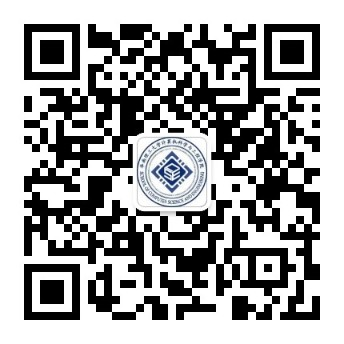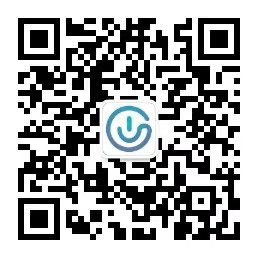《计算机科学概论》教学大纲
课程代码 | 145272 |
课程名称 | 计算机科学概论 |
英文名称 | Foundations of Computer Science |
课程类别 | 学科基础课 |
课程性质 | 必修 |
学时 | 总学时:16,课堂教学:16,实验教学:0 |
学分 | 1 |
开课学期 | 第一学期 |
开课单位 | 计算机科学与工程学院 |
适用专业 | 计算机科学与技术,网络工程 |
授课语言 | 中文 |
先修课程 | 无 |
毕业要求(专业培养能力) | №2.问题分析:能够应用数学、自然科学和工程科学的基本原理,识别、表达、并通过文献研究分析计算机和网络复杂工程问题,以获得有效结论。 №8.职业规范:具有人文社会科学素养、社会责任感,能够在工程实践中理解并遵守工程职业道德和规范,履行责任。 |
课程培养学生的能力(教学目标) | 计算机科学概论的教学目标是通过介绍计算机科学的基础概念和理论,让学生了解计算机科学的全貌,为学生学习其他专业课程打下坚实的基础。 |
课程简介 | 计算机科学概论作为计算机相关专业的第一门导入性质的学科基础课,由于同时开了IT前沿技术和高级程序设计语言C++两门课程,所以侧重介绍这两门课程没有涉及的计算机科学相关基础概念和理论,让学生了解计算机科学的基础知识,并为深入学习其他专业课程打基础。主要介绍计算机相关基础理论,包括信息层,硬件层和程序设计层等内容。 |
教学内容与学时分配 |
主要内容:思政建设,计算系统,计算历史,计算工具与计算学科。 教学重点:思政建设,计算系统。
主要内容:数字与计算,位置计数法。 教学重点:数制转换。 学时:2
主要内容:数据与计算机,数字数据表示法,文本表示法,音频数据表示法,图像图形表示法,视频表示法。 教学重点:数字数据表示法,文本表示法。 学时:2
主要内容:算术运算,计算机和电学,门,门的构造,电路,存储器电路,集成电路,CPU芯片。 教学重点:门的构造,电路。 学时:2
主要内容:独立的计算机部件,存储程序的概念,嵌入式系统,并行体系结构。 教学重点:冯诺依曼体系结构 学时:2
主要内容:独立计算机操作,机器语言,汇编语言,表达算法。 教学重点:表达算法。 学时:2
主要内容:如何解决问题,有简单参数的算法,搜索,排序,递归,几个重要思想。 教学重点:如何解决问题,几个重要思想。 学时:2
主要内容:硬件,软件,问题。 教学重点:问题。 学时:2 |
实验教学(包括上机学时、实验学时、实践学时) | 无 |
教学方法 | 课程教学综合采用课堂教学、课外作业、综合讨论、网上答疑等方法。 |
考核方式 | 本课程采用闭卷考试,占该课程总评成绩的70%。 本课程还结合的考核形式有:考勤、作业,其中,考勤占该课程总评成绩的10%,作业总评成绩的20%。 |
教材及参考书 | 教 材: 《计算机科学概论》(美)Nell Dale John Lewis著,机械工业出版社 主要参考资料: [1]《计算机科学基础——从数据操纵到计算机理论》(影印版)Behrouz A.Forouzan with Sophia Chung Fegan高等教育出版社 [2]《计算机科学与技术方法论》董荣胜 古天龙 人民邮电出版社 [3]《计算机科学概论》胡明 王红梅 清华出版社 |
制定人及制定时间 | 杨清洪,2019年7月1日 |
“Foundations of Computer Science” Syllabus
Course Code | 145272 |
Course Title | Foundations of Computer Science |
Course Category | Disciplinary Basic Course |
Course Nature | Compulsory Course |
Class Hours | Total hours: 16Theory class hours:16Lab hours: 0 |
Credits | 1 |
Semester | First semester |
Institute | School of computer science and engineering |
ProgramOriented | Computer Science and Technology, Network Engineering |
Teaching Language | Chinese |
Prerequisites | None |
Student Outcomes (Special Training Ability) | №2.Problem Analysis: An ability to identify, formulate and analyze complex engineering problems, reaching to substantiated conclusions using basic principles of mathematics, science, and engineering. №8.Professional Standards: An understanding of humanity science and social responsibility, being able to understand and abide by professional ethics and standards responsibly in engineering practice. |
Teaching Objectives | The foundation of computer science introduces the basic concepts and theories of computer science to the students, so that they can understand the whole picture of computer science and lay a solid foundation for students to learn other specialty-related courses. |
Course Description | The foundation of computer science is the first disciplinary basic course towards the students in school of computer science and engineering. the IT front-edge technology and advanced programming language C++ two courses are in the same semester, so this course focuses on introducing that the two courses do not involve the relevant basic concepts and theories of computer science.Finally the students will know the basic knowledge of computer science and lay the foundation for further study of other specialty-related courses.The course introduce the basic theory of computer science and it includes the information layer, the hardware layer, the programming layer, the limitation of computing. |
Teaching Content and Class Hours Distribution |
Main content: Ideological and political construction,The computing systems, the history of computing, computing as a tool and discipline. Key teaching points: Ideological and political construction,The computing system Class hours: 2
Main content:Numbers and computing, positional notation. Key teaching points: Decimal and binary (or other base) conversion. Class hours: 2
Main content: Data and computers, representing numeric data, representing text, representing audio data, representing images and graphics, representing video. Key teaching points: Representing numeric data, representing text. Class hours: 2
Main content: Computers and Electricity, gates, constructing gates, circuits, circuits as memory, integrated circuits, CPU chips. Key teaching points: Constructing gates, circuits. Class hours: 2
Main content: Individual computer components, stored-program concept, embedded systems, parallel architectures. Key teaching points: von Neumann architecture. Class hours: 2
Main content: Computing operations, machine language, assemble language, expressing algorithms. Key teaching points: expressing algorithms. Class hours: 2
Main content: How to solve problem, algorithms with simple variable, composite variable, sorting, recursive algorithm, important threads. Key teaching points: how to solve problem, important threads. Class hours: 2
Main content: Hardware, software, problem. Key teaching points: problem. Class hours: 2 |
Experimental Teaching | No |
Teaching Method | Classroom teaching, homework and Online answering. |
Examination Method | This course’s final examination adopts writing test, which accounts for 70% of the GPA . This course also uses jointly the following forms of evaluation: class attendance, homework, among which, the attendance takes up 10% of the GPA, and homework 20%. |
Teaching Materials and Reference Books | Teaching Books: 《Computer Science illuminated》Nell Dale John Lewis, China Machine Press Reference Materials: [1]《Foundations of computer science from data manipulation to theory of computation》Behrouz A Forouzan with Sophia Chung Fegan Higher educationpress [2]《计算机科学与技术方法论》董荣胜 古天龙 人民邮电出版社 [3]《计算机科学概论》胡明 王红梅 清华出版社 |
Prepared by Whom and When | Qinghong Yang, 2019.7.1 |



